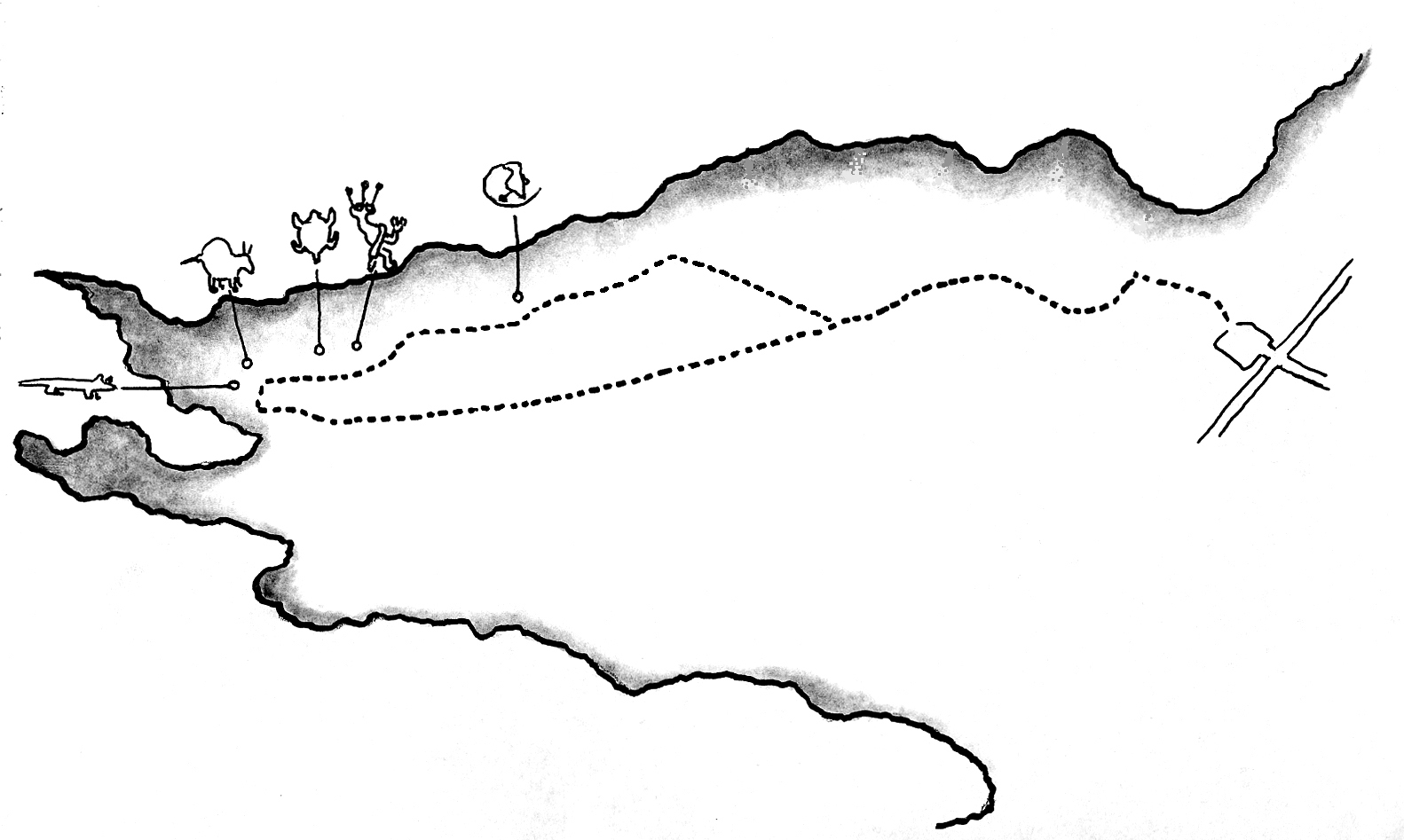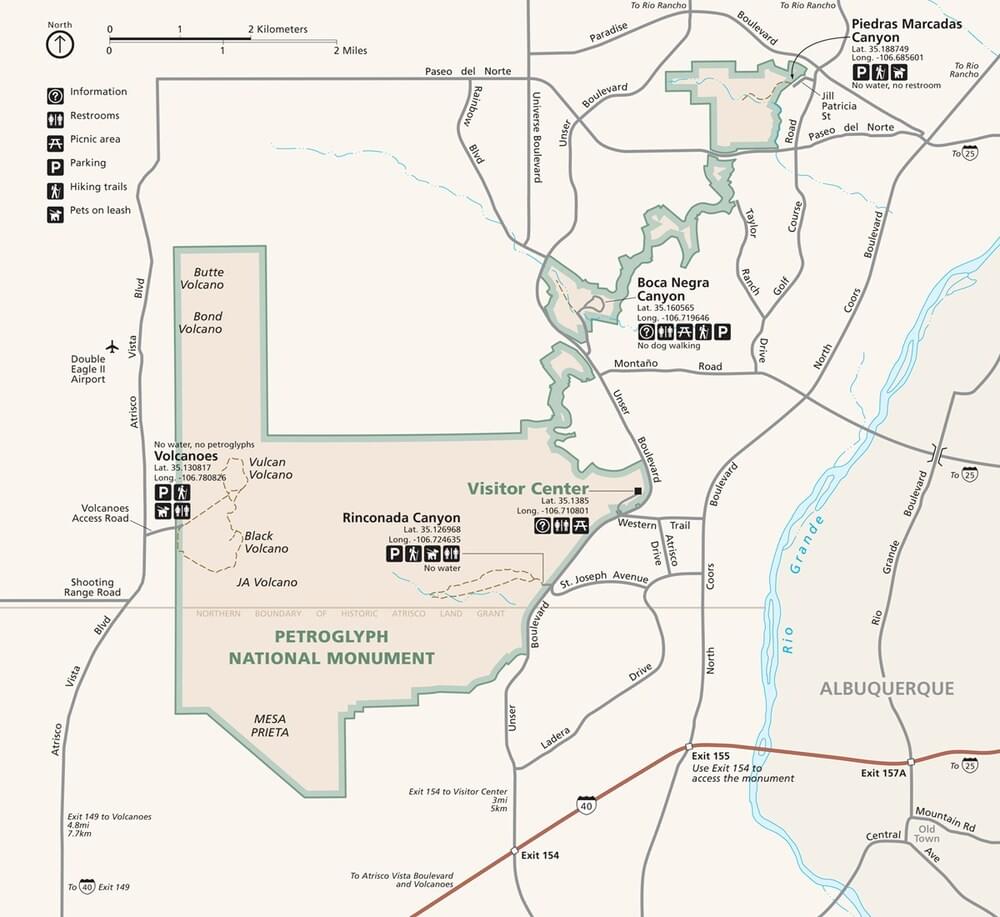Petroglyph NM--Rinconada Canyon
Petroglyph NM--Rinconada Canyon
7601 Saint Josephs Avenue Albuquerque, New Mexico 87120
Official WebsiteRinconada Canyon map
Petroglyph National Monument Official Website
Petroglyph National Monument map
About this Location
Rinconada Canyon offers an insight into the geologic, cultural, and natural resources of this region. From the parking lot, a sandy path follows the northern escarpment, carrying you over sand dunes. As you walk into the canyon, the sounds and sights of the city fade away and may be replaced with the coo of a mourning dove or a collared lizard sunning itself on a basalt boulder. Here you see prehistoric and historic petroglyphs, rock wall alignments and shelters, and wildlife living in the vegetation growing throughout the canyon.
The geology of the area shows the remnants of volcanic eruptions of 200,000 years ago. The basalt from these flows capped the sandstone of the Santa Fe Formation. As the softer sandstone eroded away, the basalt broke off and tumbled down the hillside. This naturally occurring geologic action of weathering and erosion formed the volcanic escarpment as we see it today and is also where the Ancestral Pueblo People carved petroglyphs.
The Rinconada Canyon trail follows the northern escarpment, allowing the hiker views of a variety of petroglyphs. The trail is 1.1 miles long to the back of the canyon (2.2 miles round trip) and is moderately strenuous.
About Petroglyph National Monument
See all hotspots at Petroglyph National Monument
Petroglyph National Monument protects one of the largest petroglyph sites in North America, featuring designs and symbols carved onto volcanic rocks by Native Americans and Spanish settlers 400 to 700 years ago. These images are a valuable record of cultural expression and hold profound spiritual significance for contemporary Native Americans and for the descendants of the early Spanish settlers.
Petroglyph National Monument has much more to offer than the cultural resources for which it is so well known. Various types of wildlife utilize this narrow corridor, some in transit during migration, others for their entire lifespan. Plants, birds, insects, and animals, all are part of the ecosystem that Petroglyph holds in this tiny strip of land and all will eventually encounter the millipedes of Petroglyph National Monument.
Another less popular but well-known resident of the monument is the rattlesnake. This landscape is home to several varieties, please be careful when you are visiting the monument. Follow this link for some guidelines about dealing with our legless friend, the snake.
These remnants of erupting volcanoes, which produced the basalt that became the canvas for people for thousands of years, stand starkly against the western horizon. A moderate hike will take you partway up some of these volcanic cones. Be sure to stay on the trails. It takes decades for this fragile volcanic landscape to recover from a single footstep.
While hiking in the Monument, you will notice a wide range of native desert plants.
Content from Official Website and Petroglyph National Monument Official Website

